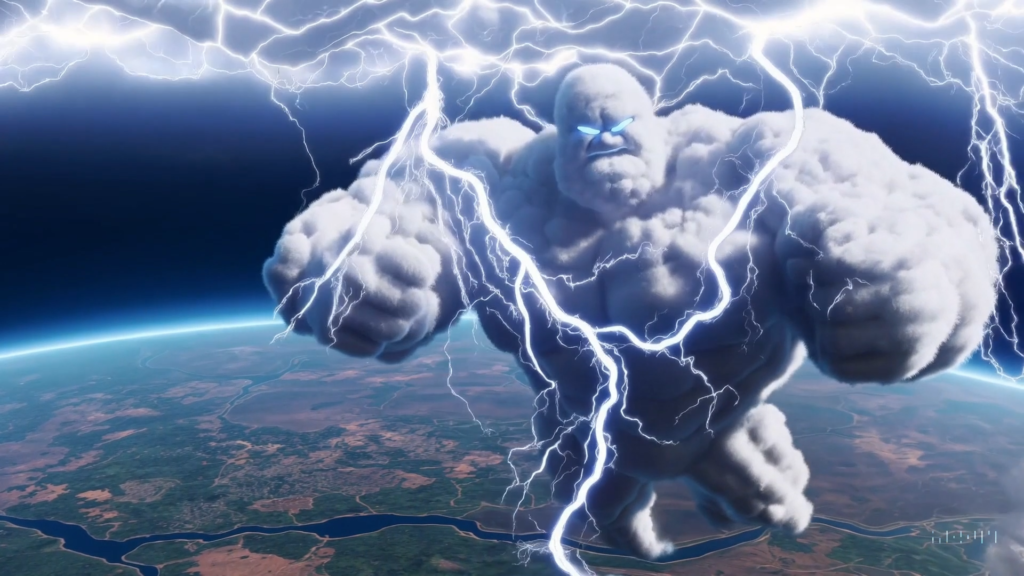Unveiling Sora AI: Revolutionizing Content Creation with Next-Gen Video Generation Technology
Introduction
OpenAI, the pioneering team behind ChatGPT, has recently unveiled Sora, a groundbreaking text-to-video AI model. Sora has the remarkable capability to transform written instructions into captivating short video clips. The collection of videos released by OpenAI showcases the astonishing potential of this technology.
Sora stands out as an innovative artificial intelligence tool capable of producing videos up to one minute long from simple text prompts. Imagine providing Sora with a scenario like “a field of cats praising one giant dog,” and receiving a video that visually narrates this exact scene.
The emergence of Sora might have slipped under the radar for those not deeply entrenched in social media buzz or specialized tech forums. Its debut was subtle, lacking the fanfare of a grandiose launch, yet its impact is undeniable.

OpenAI has shared several examples of Sora’s capabilities, where the AI impressively crafts videos with stunning realism. These sample videos highlight Sora’s ability to depict complex scenes with intricate details, such as mirror reflections, the dynamic flow of liquids, and the serene fall of snowflakes.
Working
Sora AI is built upon a sophisticated adaptive diffusion model, a process where a video initially manifests as mere static noise and is progressively refined through stages, meticulously stripping away the noise until a clear, coherent film emerges. This innovative approach not only facilitates the creation of entire films in a single attempt but also allows for the expansion of pre-existing ones. What sets Sora apart is its ability to maintain the consistency of subjects across numerous frames, ensuring they remain continuous and recognizable, even if they momentarily disappear from the scene.

At the heart of Sora’s remarkable scalability lies its utilization of a transformer architecture inspired by the principles of GPT. This strategy treats movies and images as compilations of smaller, discrete data units called patches, analogous yet distinct from the tokens used in GPT models. This nuanced approach enables Sora to handle complex visual data with exceptional precision and flexibility, opening up new horizons in the realm of AI-driven video creation.

Applications
To understand the multifaceted applications of Sora AI, let’s delve into its diverse use cases, shedding light on the essence and capabilities of this groundbreaking technology:
- Learning & Development
Sora AI excels in crafting detailed educational materials, including reenactments of historical events and visualizations of complex scientific concepts. By enhancing the learning experience with engaging and visually stimulating content, Sora AI revolutionizes traditional educational methods.
- Entertainment
Sora AI offers a plethora of opportunities for filmmakers, graphic designers, and content creators to unleash their creativity. It enables the transformation of scripts into storyboard visuals or brief video sequences, drastically reducing the time and resources required for conceptualization and pre-production stages. This highlights the importance of understanding Sora AI’s capabilities.
- Synthetic Data Production
In scenarios where real data usage is restricted due to privacy or practicality issues, synthetic data becomes invaluable. This is especially true for sensitive fields like finance or personal data protection. Sora AI facilitates the creation of synthetic datasets that mimic real-world attributes, making them available for broader use. For instance, the U.S. Air Force employs synthetic data to enhance the accuracy of automated vision systems in drones, aiding in the identification of targets under challenging conditions. Sora AI democratizes access to such technology, making it more affordable and widely available.
- Virtual Reality and Gaming
Sora AI is a boon for developers looking to enrich the immersive experience of video games and virtual reality with dynamic environments, character interactions, and engaging narratives.
- Social Media
Sora AI is adept at producing short, compelling videos for platforms like Instagram, TikTok Reels, and YouTube Shorts, especially for content that would be difficult or impossible to capture in real life. Imaginative scenarios, such as envisioning Lagos in 2056, become effortlessly achievable with Sora AI.
- Prototyping and Concept Visualization
Even when not part of the final product, Sora AI serves as an invaluable tool for quickly visualizing concepts and prototypes. Filmmakers can use it to mock up scenes before actual filming, while designers can visualize product concepts before physical production. This can be particularly useful for industries such as toy manufacturing, where a concept like a new pirate ship toy can be prototyped using AI before committing to mass production.
Sora AI’s innovative content creation capabilities open new horizons for a wide range of professionals, from filmmakers and educators to marketers, offering them the tools to bring their visions to life, make learning more interactive, and create unprecedented content.
Limitations
OpenAI acknowledges several challenges with the current iteration of Sora. One significant limitation is Sora’s lack of understanding of physical principles, leading to scenarios where the laws of physics as we know them might not be consistently applied.
Specifically, Sora struggles with accurately rendering the physics behind complex scenes, which can result in inaccuracies during cause-and-effect sequences. For instance, it might incorrectly depict a scene where someone bites into a biscuit, failing to show the expected bite mark, thereby breaking the continuity of real-world logic. The model was trained on a mix of publicly accessible and copyrighted videos, acquired through licensing agreements, though the exact volume and sources of these videos remain undisclosed.
Moreover, the model’s comprehension of cause and effect is limited, raising questions about its reliability. While OpenAI has showcased examples of high quality, it’s not clear to what extent these outcomes were the result of selective presentation. In text-to-image generation, it’s common to produce a large batch of images, selecting only the most successful outputs. The extent of effort required by the OpenAI team to curate the videos presented in their introductory showcase raises concerns about efficiency and practicality. Generating hundreds or even thousands of videos to find one satisfactory output could significantly hinder widespread adoption. A thorough evaluation of Sora’s usability and effectiveness will be possible only once the tool becomes widely available, underscoring the importance of understanding Sora AI’s current capabilities and limitations.
Conclusion
OpenAI’s Sora represents a groundbreaking advancement in the realm of text-to-video technology, marking a pivotal moment in the evolution of generative video content. This innovative model stands on the cusp of revolutionizing how we create and interact with digital media, offering a tantalizing glimpse into the future of content creation. As we anticipate its forthcoming release, the buzz surrounding Sora suggests it will catalyze a significant shift in the digital landscape, stirring excitement and curiosity across various sectors.
The introduction of Sora into the market signifies more than just technological progress; it heralds a new era where the boundaries between imagination and digital reality blur. By enabling the conversion of textual descriptions into high-quality video content, Sora promises to democratize video production, making it more accessible to a wider array of creators, from professional filmmakers to amateur content creators and educators. This leap forward in AI-powered video generation is poised to unlock unprecedented creative possibilities, transforming the way stories are told and experiences are shared.
Currently, access to Sora is limited, a situation that has left a vast community of creators and innovators eagerly awaiting the chance to explore its full potential. This restricted access has only fueled anticipation, as content creators across the globe imagine the myriad ways in which Sora can enhance their storytelling and visual content generation. The promise of Sora lies not only in its technical capabilities but also in its potential to inspire new forms of creativity and engagement, reshaping the creative landscape.
The imminent public release of Sora AI is a much-anticipated event, poised to make waves in the digital era. Once it becomes widely available, creators will have the opportunity to push the boundaries of video content, exploring new narratives and visual expressions that were previously out of reach. The launch of Sora is expected to spark a significant uproar, as it introduces a powerful tool into the hands of those ready to redefine the limits of digital creativity. As we stand on the brink of this exciting development, the anticipation among the digital community is palpable, signaling the start of a new chapter in the ongoing evolution of generative video technology.
Sora stands out as an innovative artificial intelligence tool capable of producing videos up to one minute long from simple text prompts. Imagine providing Sora with a scenario like “a field of cats praising one giant dog,” and receiving a video that visually narrates this exact scene.


